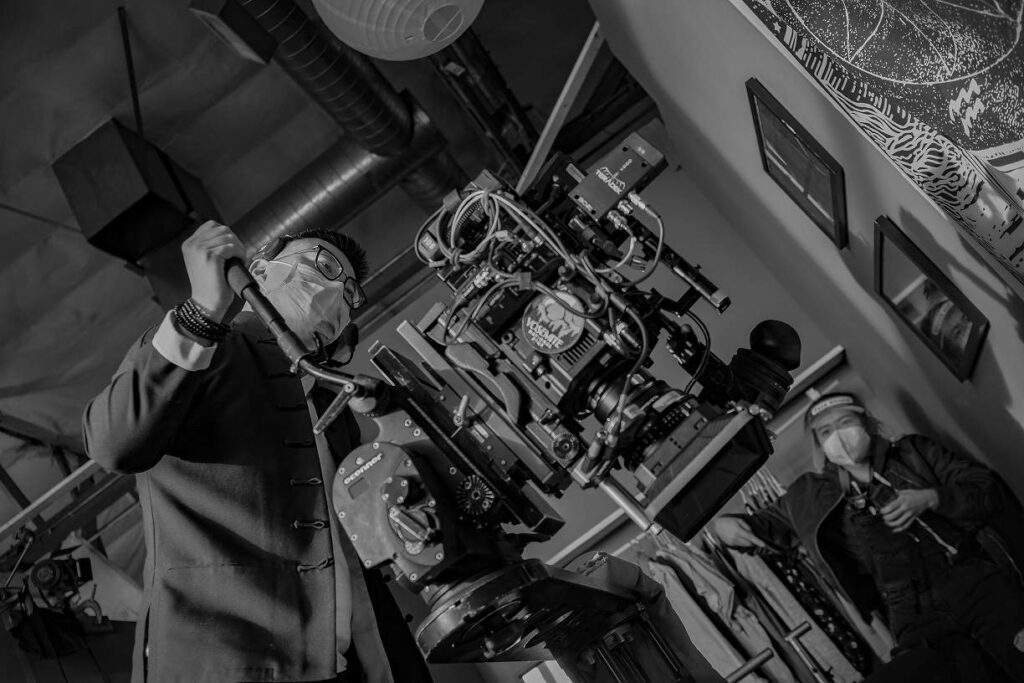
Sunhee Na’s Carma is an anxiety ridden disturbing film, in the most pleasing of ways. This young Korean filmmaker has received a host of accolades which testify to the magnificence of Carma including wins at the Oniros Film Awards, IndieX Film Festival, Venice Film Awards, and many, many more. Those who have seen it can attest to the importance of the visual language created by cinematographer Nan Li. His work on the film has similarly received praise via Best Cinematography Awards from the Tokyo Film Awards, Crown Wood International Film Festival, Latitude Film Awards, and others.
The partnership of Sunhee and Nan has resulted in not only a great film but also increasing evidence that some of the most exciting and unique productions in America are being crafted by artists from other countries who understand American culture while contributing a fresh and innovative element.
Nan relates, “If you observe today’s film industry, you will find different cinematographers from different backgrounds will present different images. Asian, European, and Latino cinematographers all have a different aesthetic sense of art and vision from American cinematographers. Sometimes a story must be captured by a cinematographer from the same background. Sometimes it needs a fresh vision to wipe out the cliché.”
In Carma we are introduced to Edmond (Robert Chestnut of Primetime Emmy Award Winning Series St. Elsewhere and Bumblebee of the Transformers Universe), a husband desperate to pay for the medical expenses of his seriously ill wife. His job as a rideshare driver connects him with a less-than professional drug dealer named Christine (Renee Rogoff). Their time together goes from bad to worse as the two become linked through a devastating accident.
As events unfold, Edmond perceives an opportunity to possess the money that could pay for his wife’s experimental treatment but at a cost to his own soul. His decision will teach all involved parties that even well intended decisions extract a hefty price.
The visual style of Carma is immensely important in transporting the characters and the audience into the emotional state which Sunhee Na desired; an ever present state of loneliness and hopelessness. This is a big dark movie with numerous overnights scenes. It deeply digs into how humanity can be challenged under uncontrollable, unpredictable, and undeniable situations. Nan’s lighting design manifests a bluish moonlight to achieve a milky, thrilling, and untouchable emotional atmosphere. The DP uses a very different approach, but equally as striking, in the opening scene of the film.
Nan describes, “In this scene, Edmond rushes into the hospital with his dying wife. He is struggling, helpless, and silent. The director and I discussed this scene for a month concerning the visual approach. How do we capture it? How do we convey his hopeless emotion with the images? It is just 10 seconds running. How do we shoot such a rush action by showing his complicated inner world? Sunhee was trying to express his Edmond’s peaceful inner world because, during such a short distance, he must be thinking about a ton of things.
Using fast movement or rushing images would not communicate his inner turmoil to the audience. It needed to be silent. He needs a break. He needs a quiet moment to think. I suggested shooting with a low frame rate which would bring a motion blur as he walks. The wheelchair’s wheels also rotate with the motion blur. Any moving images are blurry and fuzzy. This special effect indeed slows down the moment. Everything in the frame seems to stand still and quiet.
With only slow music as the audible accompaniment, we start to dig into the protagonist’s inner world. I also added an extreme close-up of his eyes. The eyes are the window of the heart. When the film cuts to his eyes, we see his rush with hopelessness.” Numerous moments like this throughout Carma display the subtle yet powerful tactics Nan has taken to place the audience inside the head and heart of Edmond.
While he has received much praise for the visual and emotional tone he crafted for Carma, Nan Li is humble when communicating his role in the grand scheme of filmmaking. He imparts, “Sunhee is a very young female Korean director. I admire her bravery in telling such an emotional and complicated American story. Story-wise, cinematographers should always know their roles. We are not here to show off our fancy technique skills.
We are here to help the director tell the story visually. We are their brushes, and we are their eyes. Cinematographers should never have their own styles; or rather, our styles are the story’s styles. Cinematographers get awards not because of their high-level of technical capability. We get awards because we use the right skills to tell the story. If the audience thinks ‘What a beautiful image!’ after watching a movie but it doesn’t match the feel of the story, that is abortive cinematography.”
Writer : Coleman Haan